What is a Self-Propelled Lawn Mower?
If mowing the lawn feels more like a workout than it should, a self-propelled lawn mower may be just what you need. Traditional push mowers rely solely on your strength to move them – but self-propelled lawn mowers have a built-in drive system that powers the wheels, making mowing the lawn quicker, easier and less tiring.
If you’re wondering whether a self-propelled lawn mower is the right fit for your yard, we’re here to help. Let’s explore how self-propelled mowers work, examine why they’re more convenient and compare them to push mowers to help you make an informed decision.
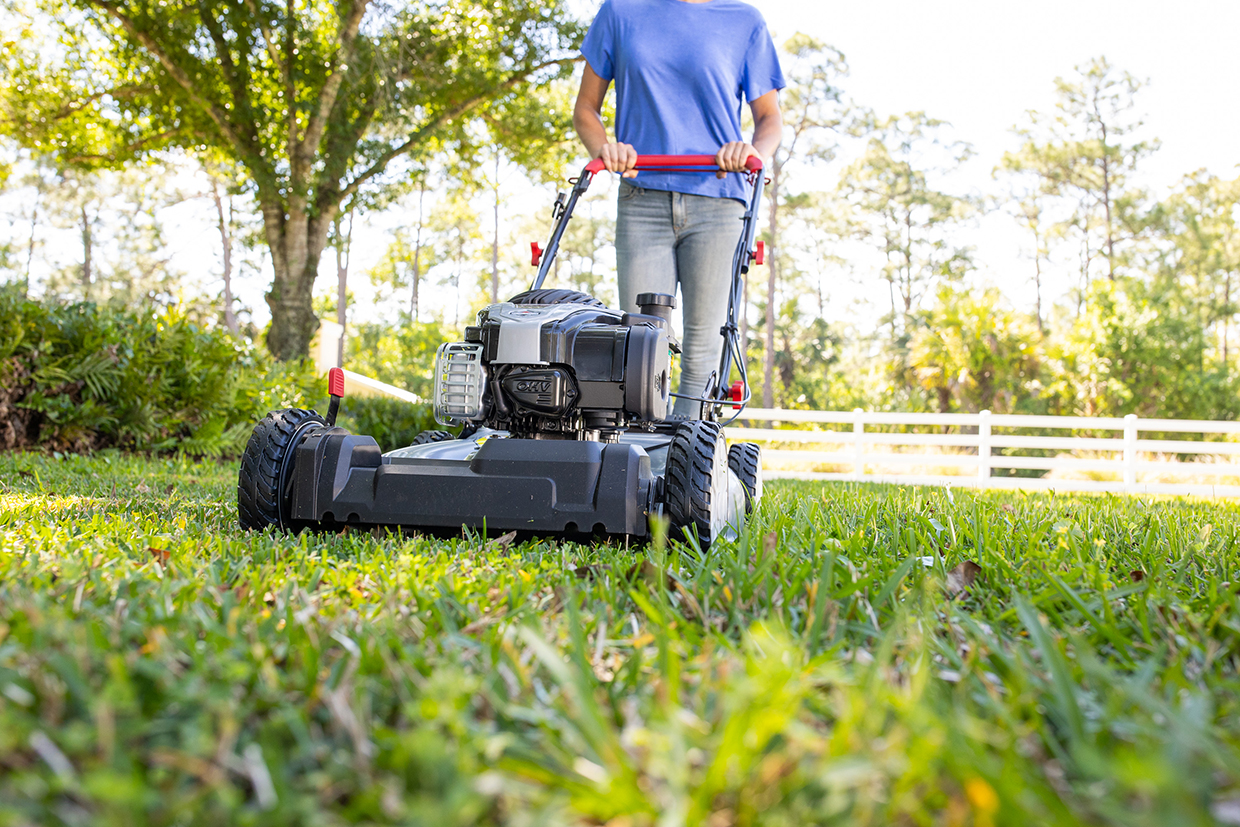
What is a Self-Propelled Lawn Mower and How Does it Work?
A self-propelled lawn mower is a great tool to help you simplify mowing the lawn. This mower model helps you easily tackle your lawn using a built-in drive system to power the wheels. Instead of pushing your lawn mower through your yard, you can walk behind it and steer. The result is a more streamlined mowing experience – and much less effort!
Self-propelled lawn mowers can be powered either by a gas engine or a battery-powered electric motor. Depending on your yard’s layout, you can choose between front-wheel drive for flat, easy-to-mow areas, rear-wheel drive for better traction on hills – or all-wheel drive to tackle all of the above.
Types of Self-Propelled Mowers
When it comes to self-propelled lawn mowers, not all drive systems are created equal. The three types of drive systems – front-wheel, rear-wheel and all-wheel – can affect how your mower performs on different types of terrain. Picking the correct type of self-propelled lawn mower can make a big difference in making your mowing experience easy and enjoyable.
Let’s dive deeper into the three types of self-propelled lawn mowers – and where each one shines.
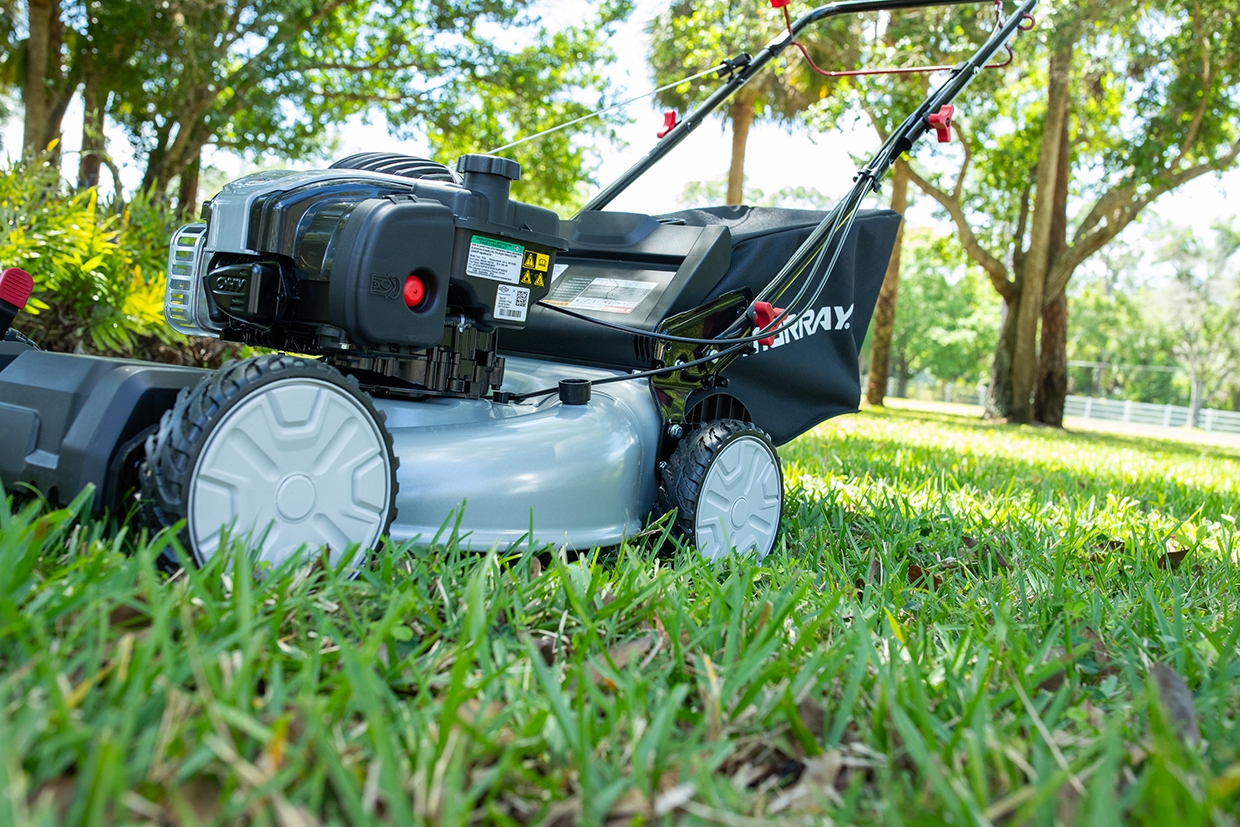
Front-Wheel Drive (FWD)
Front-wheel drive mowers are powered by the front wheels, making them easy to steer and turn. This feature is convenient for lawns with curves and obstacles like landscaping, swing sets and furniture.
- Best for: Flat lawns with tight spaces or obstacles.
- Why choose front-wheel drive: Lightweight, easy to maneuver – ideal for a smaller yard.
- Pro tip: Lifting the front to turn or pivot with an FWD mower can cause a loss of traction, so keep the front wheels on the ground whenever possible.
Rear-Wheel Drive (RWD)
Rear-wheel drive mowers get power from the back wheels, providing better traction and stability – especially on uneven or sloped terrain.
- Best for: Hilly or uneven ground.
- Why choose rear-wheel drive: The stronger wheel grip offers more control when mowing straight lines or hills.
- Pro tip: RWD mowers are generally less maneuverable than front-wheel models in tight spaces.
All-Wheel Drive (AWD)
All-wheel drive mowers feature power in all four wheels, giving you maximum control and performance across all types of terrain.
- Best for: Large yards with challenging features like hills, rough patches and flat areas.
- Why choose all-wheel drive: Superior traction, balance and versatility across all lawn types.
- Pro tip: AWD mowers are typically heavier and more expensive than other options – but the investment is worth it for tackling tough yards.
Each drive system has unique advantages. Knowing your yard's layout and potential challenges will help you choose the self-propelled lawn mower that best fits your needs.
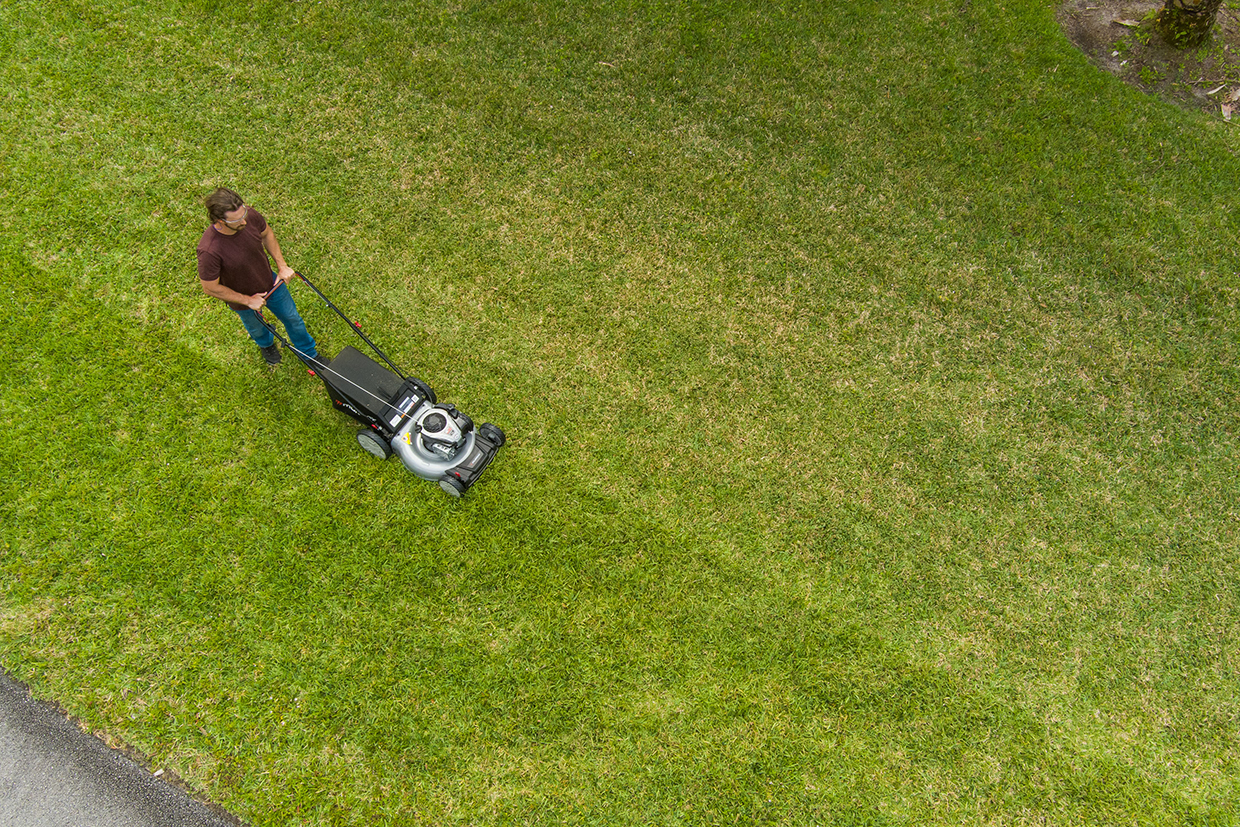
Advantages of Self-Propelled Mowers
Whether you’re mowing a small yard or tackling a more challenging landscape, self-propelled models get the job done. Based on our expert insights and customer feedback, it’s clear that self-propelled models make mowing quick and easy – without sacrificing on cut quality. Your yard will be the envy of your neighborhood in no time!
Key advantages of buying a self-propelled lawn mower include:
- Less Physically Demanding: If you’ve ever used a push lawn mower in the heat of summer, you know it can be an exhausting job. Self-propelled lawn mowers are easier to maneuver since the drive system powers the wheels for you.
- Mow More Quickly: The self-propel feature helps you cover more ground in less time, no matter what size lawn you’re tackling.
- Better Traction & Control: Self-propelled lawn mowers have excellent stability and handling, especially with rear or all-wheel drive models.
- Consistent Cutting: Using a mower that requires less effort to push, you can easily maintain a steady pace – with a crisp, professional-looking cut as the satisfying result.
- Adjustable Speed: Many self-propelled models have speed-adjusting options. Walk slower if you’re out for a leisurely mow, or pick up the pace if you’re hustling to get the lawn finished before it starts to rain.
Self-propelled lawn mowers are a time-saving win for your lawn care routine. You'll love the advantages of choosing a self-propelled mower, from ease of use to a crisp, clean cut.
Disadvantages of Self-Propelled Mowers
While self-propelled lawn mowers offer homeowners convenience and speed, these mowers also have a few drawbacks. Let’s take a look at the potential disadvantages of purchasing a self-propelled model:
- Higher Cost: Thanks to the built-in drive systems, self-propelled models cost more than standard push lawn mowers.
- Heavy Design: The drive mechanism and larger engines (or batteries) can make self-propelled lawn mowers heavier than push mowers. A self-propelled mower might be more challenging to maneuver, lift or transport compared to push mowers that can weigh less.
- Increased Maintenance: More moving parts mean more maintenance over time. Drive systems, belts and wheels may need occasional attention or repairs to keep everything running smoothly.
- Higher Gas or Battery Consumption: Self-propelled lawn mowers power both the blade and the wheels, using more fuel or battery power than traditional push mowers – especially during longer mowing sessions.
Understanding the potential downsides of self-propelled lawn mowers can set realistic expectations – and provide clarity for choosing a mower that best fits your lawn care routine.
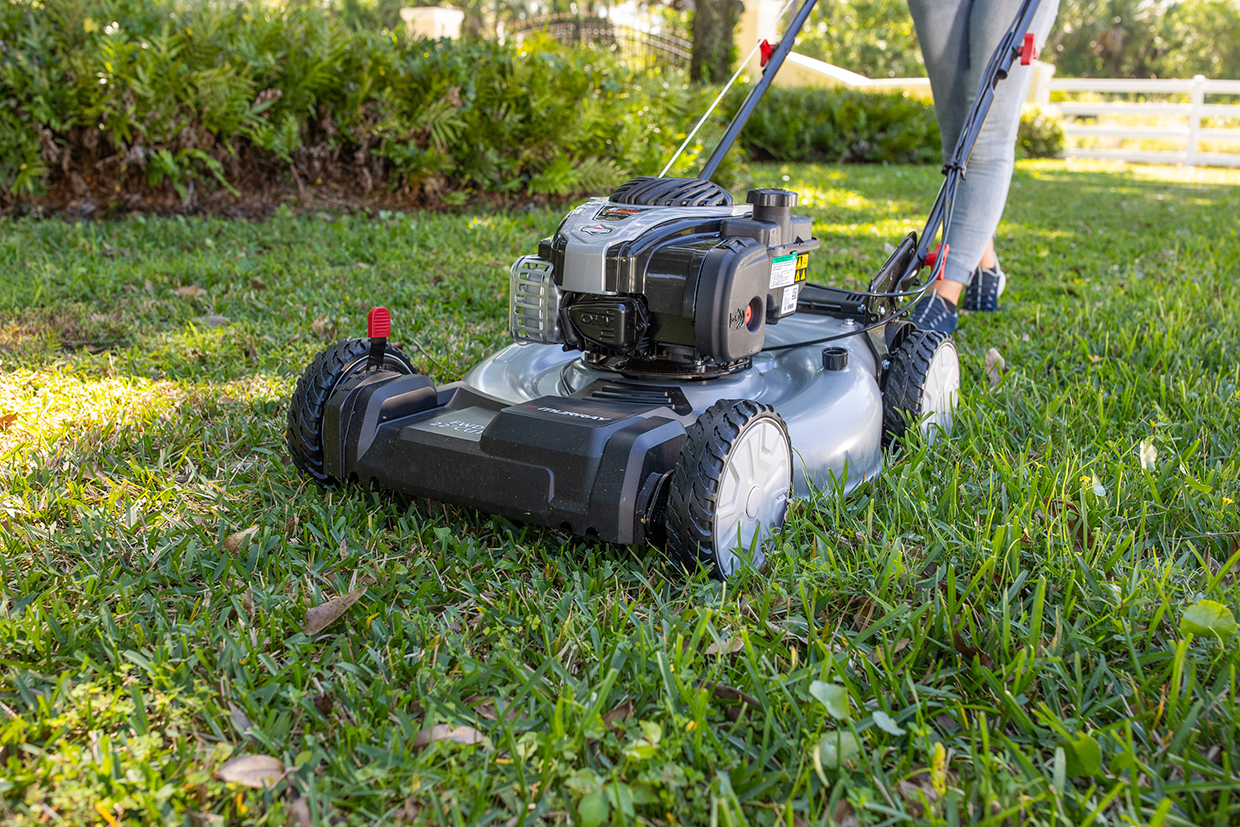
Features to Consider in Self-Propelled Mowers
Choosing the right self-propelled lawn mower means finding a model that fits your yard, lifestyle and mowing preferences. With so many options available, it helps to know what features matter most when deciding. Let's look at a few key factors to consider before purchasing a self-propelled model:
- Drive Type: What kind of drive type best fits your yard? Consider whether front-wheel, rear-wheel or all-wheel drive would work well with your lawn’s terrain. Front-wheel is great for flat, easy-to-navigate spaces, while rear-wheel and all-wheel drive offer better traction for slopes and uneven ground. Determining the correct drive type improves handling and impacts mowing efficiency, especially in yards with varied terrain or tight corners.
- Engine Power: A stronger engine (or motor, for electric models) means more cutting power and smoother performance, especially in thick grass or tough conditions. Selecting the right engine power ensures your mower can maintain consistent blade speed, which is key to achieving a clean, even cut across varying lawn conditions.
- Cutting Width: When it comes to mowing, size does matter – at least when discussing your mower's cutting deck. A wide cutting deck lets you cover more ground with each pass, meaning less mowing and more time enjoying your yard. If you've got a large, open lawn, choose a wide deck mower and get it done faster. But if your yard has many twists, turns or tight spots around trees and garden beds, a narrower mower deck gives you the agility to navigate easily.
- Speed Control: Do you ever feel like your mower is dragging behind or racing ahead? That's where speed control comes in. With a self-propelled mower that lets you adjust the pace, you can match it to your natural walking speed and the layout of your yard. It’s especially helpful for large yards where adjusting your speed helps streamline the job.
- Grass Management Options: Choose a mower that fits your preferred way of handling clippings. A quick refresher: mulching returns nutrients to the soil, bagging collects grass for a clean finish and side-discharge is great for powering through wet or tall grass. The right option depends on your lawn goals – whether it’s a polished look, healthier soil or simply getting the job done quickly in tough conditions.
- Battery Life vs. Fuel Efficiency: Electric mower models offer quiet operation and lower emissions, but battery life matters for larger lawns. Gas-powered mowers can provide longer runtime – but may require more frequent fuel stops. Picking the power source that best fits your needs ensures you won’t run out of juice mid-mow, especially if your lawn needs extra time or power to finish the job efficiently.
- Durability & Maintenance Needs: When selecting a lawn mower, prioritize durable materials, quality construction and easy access to parts for maintenance. A well-built mower holds up better over time and helps you avoid unexpected breakdowns – making it a smarter, more cost-effective investment in the long run.
Taking time to evaluate these features can help you find a mower that is a great fit for your yard – and makes lawn care feel less like a chore.
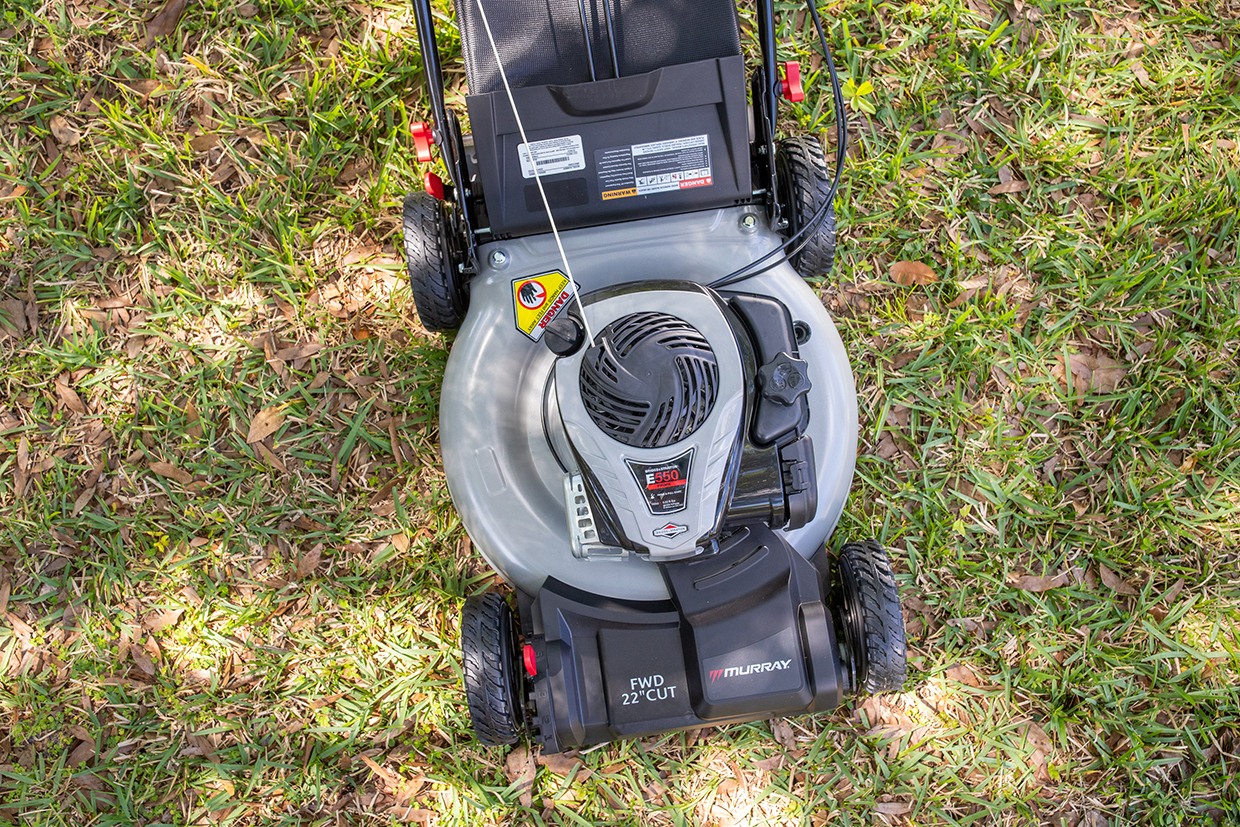
FAQs about Self-Propelled Lawn Mowers
Still have questions about self-propelled lawn mowers? We’re here to help! Whether you're wondering how self-propelled models work in different situations or what to expect for maintenance and usability, we've got you covered. Let’s look at the most common questions to help you make an informed decision.
Can I push a self-propelled mower if the drive system is off?
You can manually push a self-propelled mower when the drive system is disengaged – however, it will be a lot more challenging. In addition to self-propelled models having a heavier base weight, the self-propel mechanism also introduces resistance when the mower isn’t in use. The final verdict: pushing a self-propelled mower with the drive system off is possible, but it isn’t easy to do.
How long do self-propelled mowers last?
Proper maintenance means a quality self-propelled lawn mower can last 8-10 years (or more!). Lifespan depends on factors like mower frequency, the quality of the mower and the level of maintenance over the years.
Are self-propelled mowers good for small lawns?
Self-propelled mowers can be used on small lawns, though they may be a more powerful model than you need. A push mower might be more cost-effective and easier to maneuver if your yard is small and flat.
Can I disengage the self-propel feature?
Absolutely. Most models include a lever or control that allows you to disengage the self-propel function, so it’s easy to push the mower manually when turning or moving it short distances.
Can I pull back on a self-propelled mower?
It depends on the mower model. Many self-propelled mowers allow you to pull them backward once the drive system is released; however, some may offer more resistance due to the wheel design.
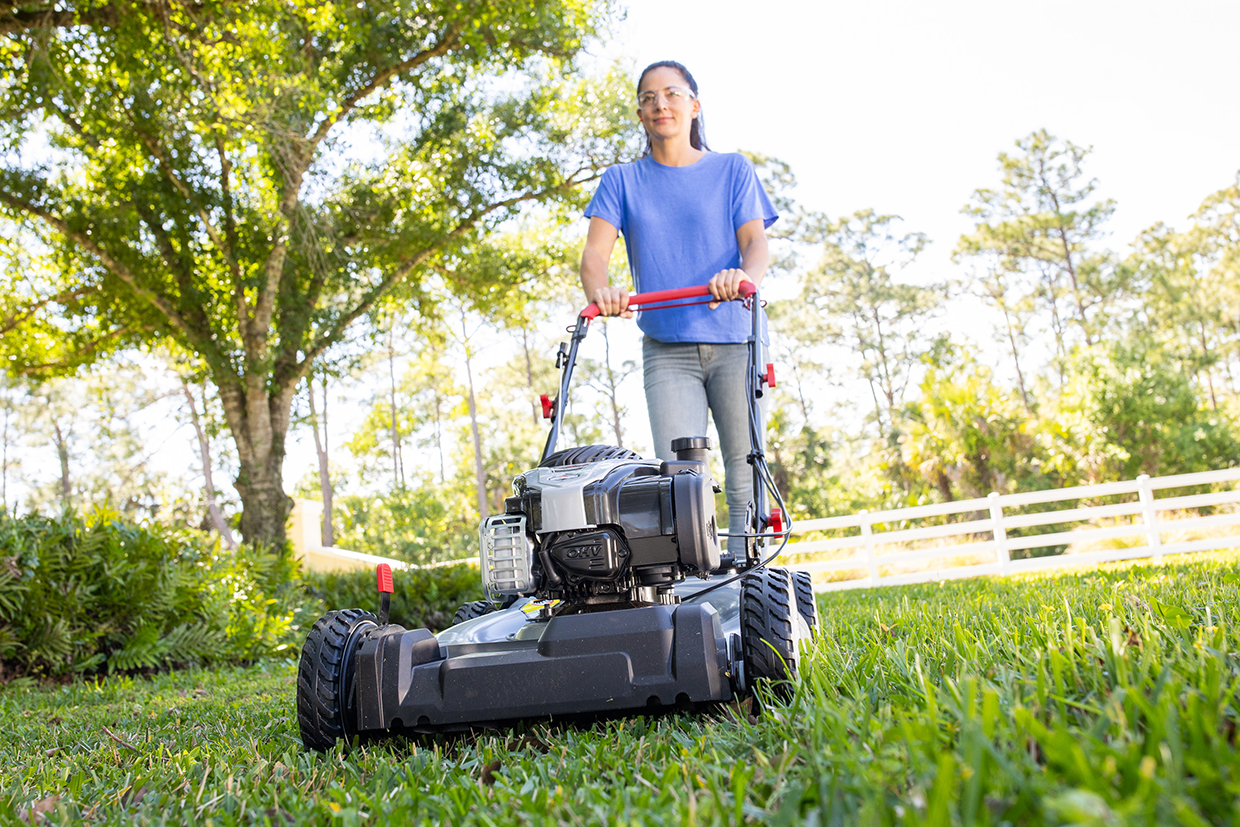
Self-Propelled Lawn Mowers: A Win for Your Lawn
If you’re ready to switch to a more effortless and streamlined lawn mower, a self-propelled model is an excellent choice! While downsides exist – including a higher price point and a heavier frame – the benefits far outweigh any negatives. Self-propelled lawn mowers do the heavy work of mowing by using a built-in drive system to power the wheels. Whether you’re maintaining a flat yard or a more challenging terrain, a self-propelled lawn mower is up to the task. With a self-propelled mower leading the way, cutting the lawn might soon become your most enjoyable weekly chore!
Shop Murray Mowers: Get it Done. Go Have Fun.
If you're looking for affordable and efficient lawn mowers, check out Murray Mowers. Found exclusively at Home Depot and built with powerful Briggs & Stratton engines, the Murray line includes push mowers, self-propelled mowers, riding lawn tractors and zero-turn mowers.



